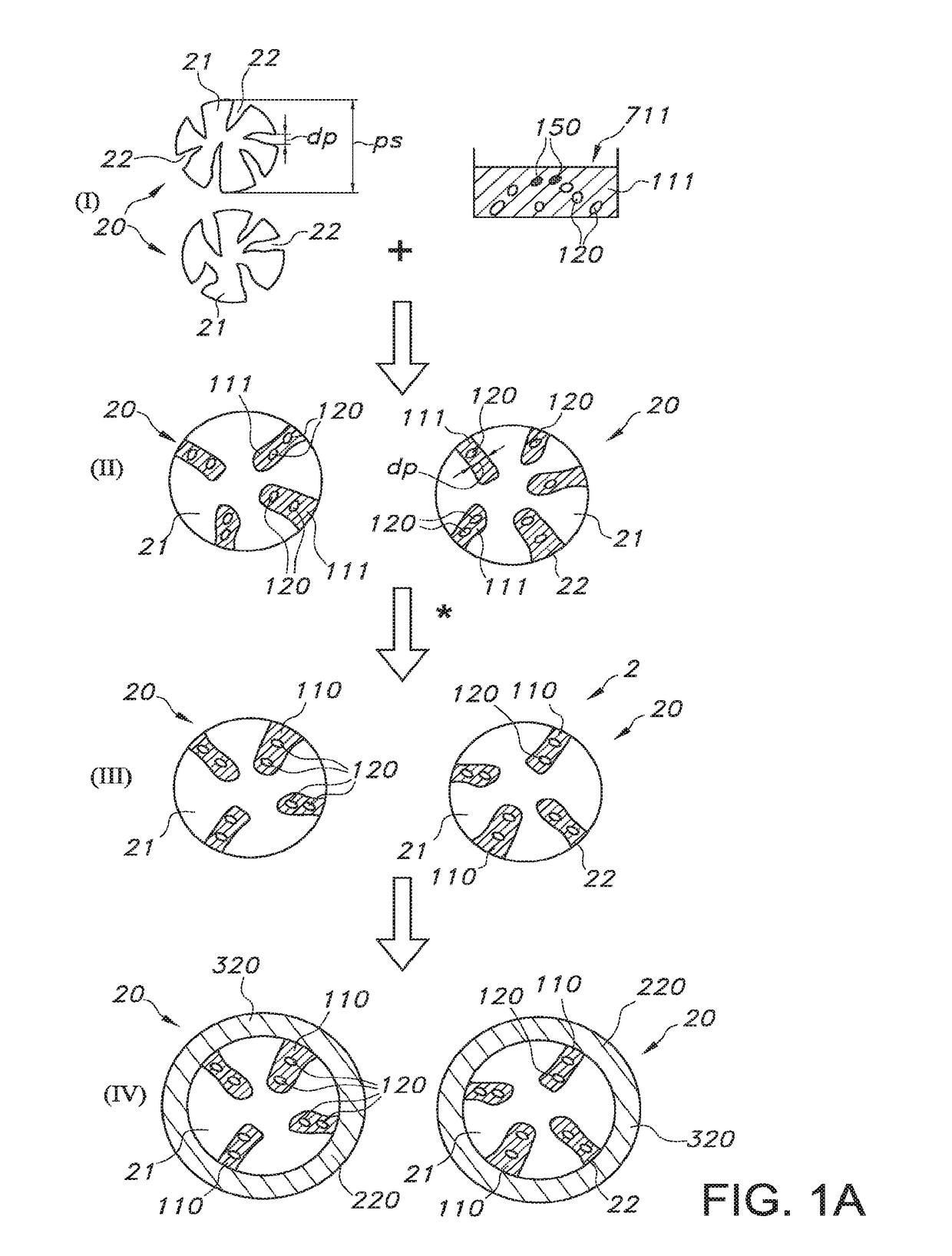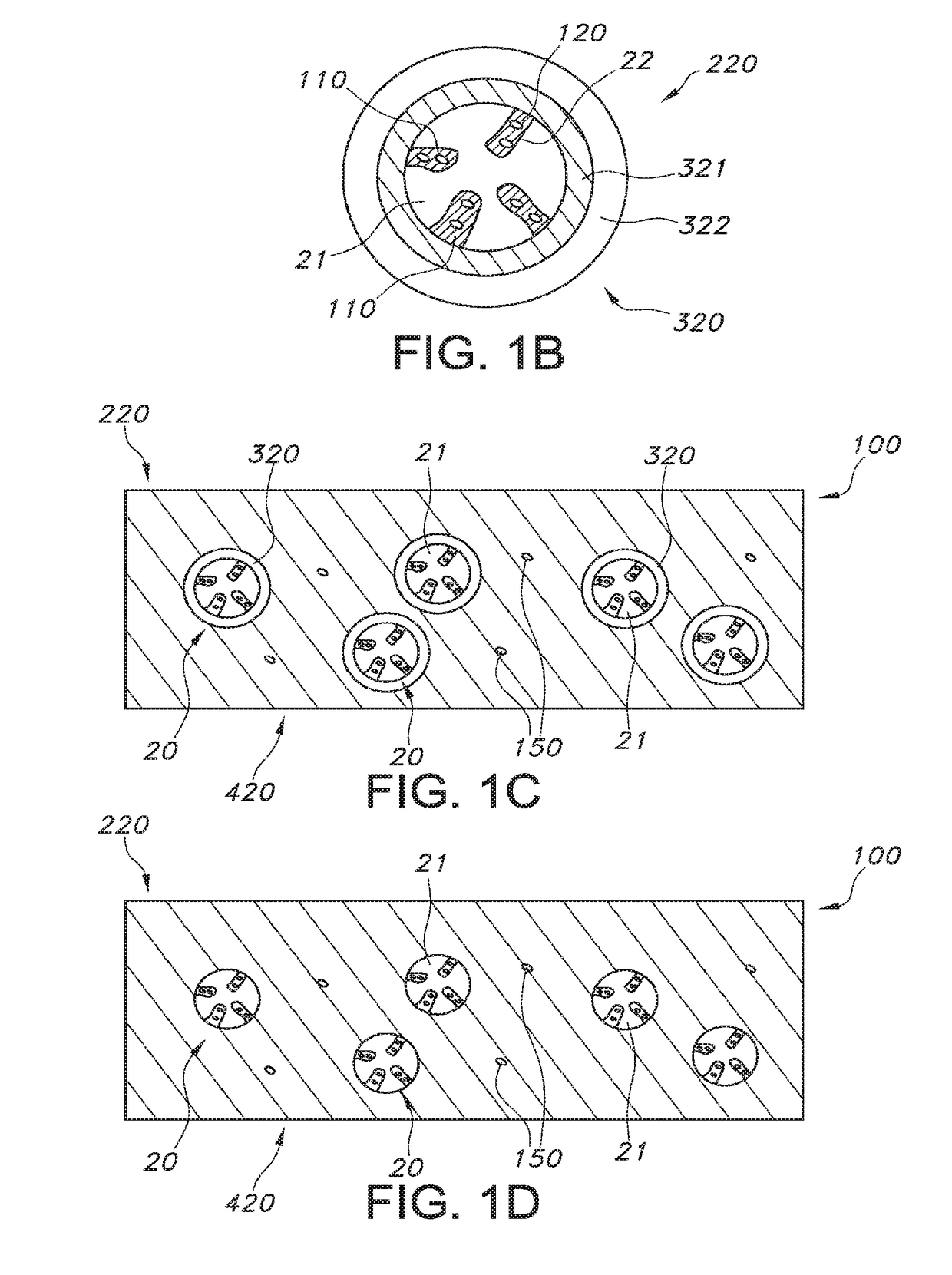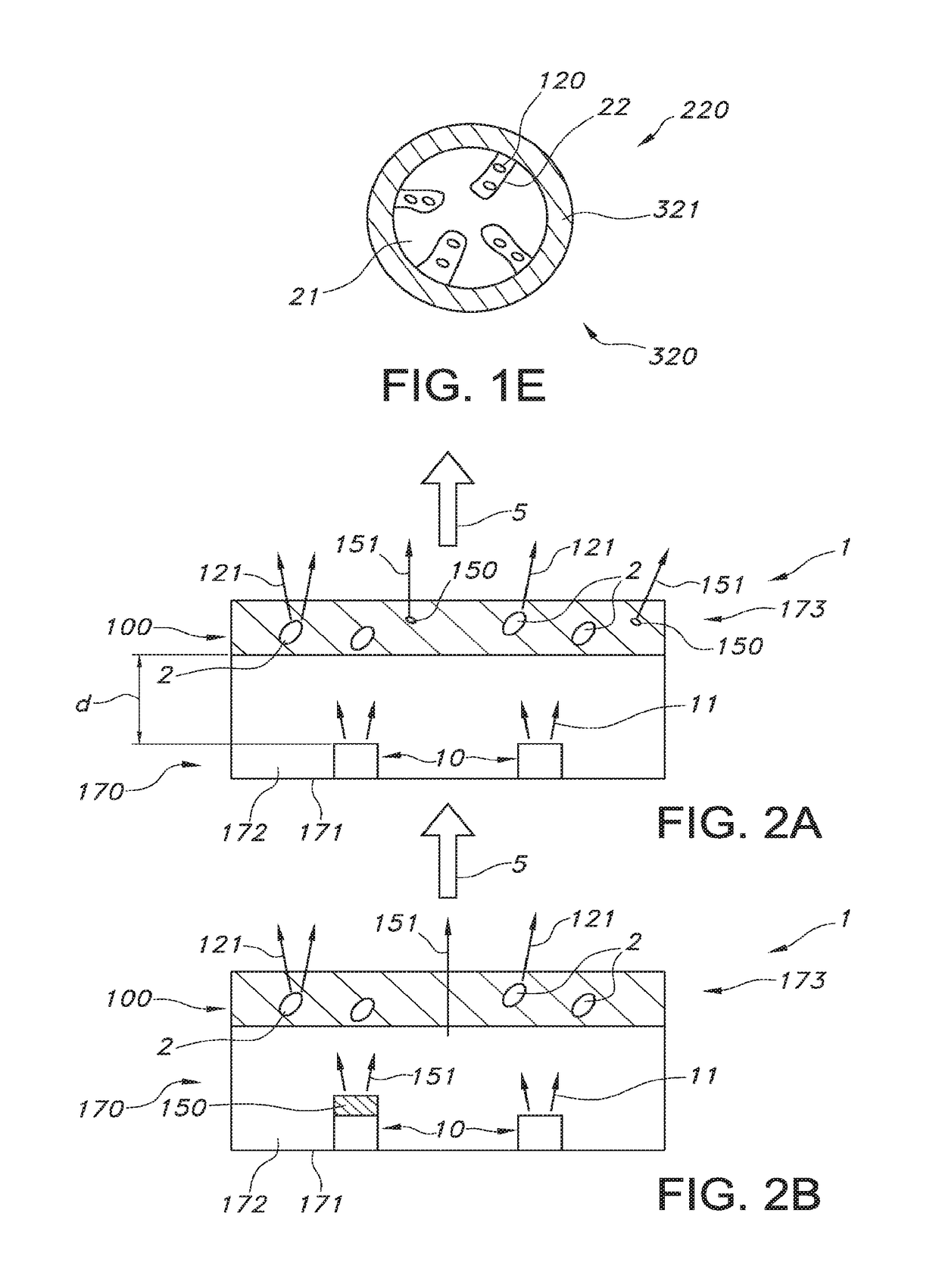Encapsulated quantum dots in porous particles
a quantum dots and porous particle technology, applied in the field of particles, can solve the problems of affecting the quality of light, affecting the effect of light intensity, and affecting the effect of light intensity, and achieve the effect of high efficacy and high quality white ligh
- Summary
- Abstract
- Description
- Claims
- Application Information
AI Technical Summary
Benefits of technology
Problems solved by technology
Method used
Image
Examples
example 1 preparation
of Impregnated Particles
[0181]Trisoperl particles were impregnated according as follows: 1 gram of 5% wt dispersion of Crystalplex QDs in heptanes was added to IBMA / HDDA (5 g). This results in a 1% wt dispersion QDs in IBMA / HDDA, to which 1 gram of PSPs were added, and 0.5% wt photoinitiator (irgacure 184). The powder-acrylate mixture was put on a Buchner funnel, and filtrated for a few minutes in the glovebox. After filtration the powder was cured for 4 minutes with UV light in the glovebox. This results in a sticky powder, which was converted into a loose powder of individual PSPs by dispersing it in toluene and giving it a 15 minute US treatment in a close vial, hence no contact with ambient air. Next, the toluene was removed in the glovebox, by decanting, followed by evacuation of a few hours to remove all toluene. FTIR measurements show that the acrylic has a 95% conversion rate, which means a nearly complete curing of the acrylate. A subset of these particles was mixed into eb...
example 2 plasma
Enhanced ALD on Impregnated PSP
[0182]50 mg of the impregnated PSP (batch 1) was spread out over a silicon wafer (outside the glovebox), and inserted into the Emerald chamber (for plasma enhanced ALD) of an ASM dual chamber ALD system. A 50 nm alumina layer was applied using the plasma-enhanced ALD process at 100 C, using TMA (trimethylaluminium) and O2 as reactive gasses. After deposition, the powder was harvested and mixed into Ebecryl 150 (with 1% wt irgacure 184) to make cured films of the ALD-coated PSP's in a secondary matrix. As described above in example 1, reference samples of the same impregnated PSP's without ALD were also made, in addition to films of plain QDs in IBMA / HDDA (no impregnation). In all cases, the samples consisted of a 100 μm acrylic layer, in between two glass plates. The QE of the ALD-coated PSP's using plasma enhanced ALD (called sample ALD-a from here on) had a QE of 50%, which is the same as before ALD coating (batch 1, 52%). The ALD coating thus has (a...
example 3
Thermal ALD @ 150 C on Impregnated PSP
[0190]30 mg of the impregnated PSP (batch 1) was spread out over a silicon wafer (outside the glovebox), and inserted into the Pulsar chamber (for thermal ALD) of an ASM dual chamber ALD system. A 50 nm alumina layer was applied using the thermal ALD process at 150 C, using TMA (trimethylaluminium) and O3 as reactive gasses. After deposition, the powder was harvested and mixed into Ebecryl 150 (with 1% wt irgacure 184) to make cured films of the ALD-coated PSP's in a secondary matrix. The QE of the ALD-coated PSP's using thermal ALD at 150° C. (called sample ALD-b from here on) had a QE of 31%, which is a drop of 20% compared to before ALD coating (batch 1, QE of 52%).
[0191]A small part of the thermal ALD coated particles from ALD-b was used to make cross-sections and investigate in SEM. FIG. 7A shows a SEM image of PSP's with ALD-b coating. In the prepared Schliffs (cross-sections) some of the particles were not fully embedded in the epoxy carr...
PUM
| Property | Measurement | Unit |
|---|---|---|
| QE | aaaaa | aaaaa |
| wavelength | aaaaa | aaaaa |
| specific wavelength | aaaaa | aaaaa |
Abstract
Description
Claims
Application Information
 Login to View More
Login to View More - R&D
- Intellectual Property
- Life Sciences
- Materials
- Tech Scout
- Unparalleled Data Quality
- Higher Quality Content
- 60% Fewer Hallucinations
Browse by: Latest US Patents, China's latest patents, Technical Efficacy Thesaurus, Application Domain, Technology Topic, Popular Technical Reports.
© 2025 PatSnap. All rights reserved.Legal|Privacy policy|Modern Slavery Act Transparency Statement|Sitemap|About US| Contact US: help@patsnap.com



